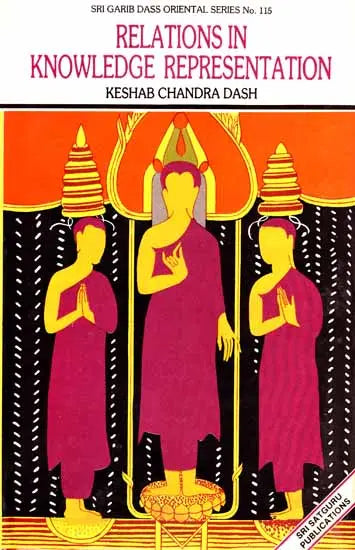Relations in Knowledge Representation: An Inter-disciplinary Study in Nyaya, Mimamsa, Vyakarna, Tantra, Modern Linguistics and Artificial Intelligence in Computer Application
Relations in Knowledge Representation: An Inter-disciplinary Study in Nyaya, Mimamsa, Vyakarna, Tantra, Modern Linguistics and Artificial Intelligence in Computer Application is backordered and will ship as soon as it is back in stock.
Couldn't load pickup availability
Genuine Products Guarantee
Genuine Products Guarantee
We guarantee 100% genuine products, and if proven otherwise, we will compensate you with 10 times the product's cost.
Delivery and Shipping
Delivery and Shipping
Products are generally ready for dispatch within 1 day and typically reach you in 3 to 5 days.
Book Details:
-
Author: Keshab Chandra Dash
-
Publisher: Sri Satguru Publications
-
Language: English
-
Edition: 1991
-
ISBN: 9788170302667
-
Pages: 194
-
Cover: Hardcover
-
Dimensions: 22.5 cm x 14 cm
-
Weight: 320 gm
About the Book:
This groundbreaking interdisciplinary work delves into the intricate theories of knowledge representation through the lens of Indian philosophical systems, especially in the context of Artificial Intelligence. It uniquely combines traditional Indian logic—Nyaya, Mimamsa, Vyakarana, and Tantra—with modern computational approaches in linguistics and AI, offering a robust and disambiguated model of semantic interpretation.
The book emphasizes sabdabodha (verbal cognition) and discusses its relevance to semantic clarity and internal representation in both philosophical and computational frameworks. It presents a comprehensive analysis of how expressions attain meaning through relational logic and structured models. The author explores core ideas such as the logic of consciousness, linguistic identity, non-identity, referential absence, and philosophical semantics.
Comprising 16 in-depth chapters, this book systematically investigates themes like identity and difference, the Mimamsa theory of knowledge, Tantric sentence structure, Nyaya conceptual graphs, and logical grammar. The final chapters relate these classical models to contemporary applications in AI, particularly natural language processing, demonstrating how Sanskrit’s syntactic and semantic precision aligns with computational models.
Rich in both theoretical insight and practical diagrams, this volume serves as an essential resource for scholars of Sanskrit, AI researchers, linguists, and philosophers interested in cross-disciplinary studies.





